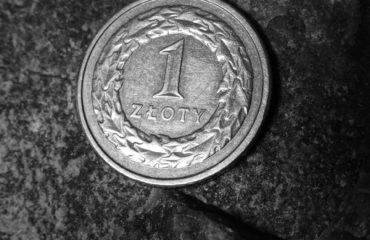The Ministry of Finance proposed solutions in the field of tax reliefs, which are part of the so-called “Polish Deal”.
R&D relief
The most important change is the proposal that all taxpayers should be able to deduct 200% of employee costs as part of R&D.
Relief for innovative employees
According to the proposed regulation, a taxpayer who is a payer conducting R&D activity will be able to deduct eligible costs from PIT advances, which he did not deduct from his income in the annual tax return as part of the R&D tax relief.
This deduction applies to the income (revenues) of those people whose working time allocated to the implementation of R&D activities remaining in the total time of work / activity in a given month amounts to at least 50%, or whose working time is allocated to the provision of research and development services for on the basis of a contract of mandate or a contract for specific work in a given month, the remaining time allocated to the performance of this service is at least 50%.
The proposed solution will apply to those cases where the taxpayer incurred a loss on account of the conducted business activity or the amount of income was lower than the amount of deductions due to eligible costs related to research and development activities.
In other words, the R&D tax relief not deducted in a given year can be used to “pay” PIT on the salaries of “innovative employees”.
Relief for prototypes
The draft provides for the possibility of deducting from the tax base:
- cost of trial production of a new product or
- costs of introducing such a product to the market.
It will be possible to deduct an amount representing 30% of the sum of the costs of trial production of a new product and launching a new product on the market, and the amount of the deduction in a tax year may not exceed 10% of income obtained from sources of income other than capital gains.
The trial production of a new product shall be understood as the stage of technological start-up of production that does not require further design and construction or engineering works, the purpose of which is to perform trials and tests before launching the production process of a new product, resulting from the taxpayer’s research and development, while technology covers the period from incurring the first cost associated with this stage until the start of production of a new product.
Placing a new product on the market shall be understood as activities undertaken in order to prepare documentation aimed at obtaining certificates and permits for the product resulting from research and development work carried out by the taxpayer, enabling the product to be sold.
The costs of trial production of a new product in this relief will be understood as:
- purchase price or production cost of brand new fixed assets necessary to start trial production of a new product (Groups 3-6 and 8 of fixed assets classifications);
- expenses for the improvement of fixed assets incurred to adapt the fixed asset to the launch of trial production of a new product (Groups 3-6 and 8 fixed assets classifications);
- costs of materials and raw materials purchased solely for the purpose of trial production of a new product.
The costs of introducing a new product to the market in this relief will be understood as the costs of:
- research, expertise, preparation of documentation necessary to obtain a certificate, approval, CE mark, etc.
- product life cycle studies;
- Environmental Technologies Verification (ETV) system.
The costs will be deductible in net value (VAT deducted) and will not affect the depreciation of the above-mentioned fixed assets.
The deduction will be due in the year of actual costs incurred, if they have not been reimbursed to the taxpayer in any form or have not been deducted from the income tax base.
As in the case of the R&D tax relief, zone taxpayers and those using the support mechanism under the Polish Investment Zone will be able to use the relief only as a result of the taxable result.
Relief for robotization
As part of the relief, it will be possible to deduct from the tax base an amount representing 50% of the tax-deductible costs incurred in the tax year for robotization, the amount of the deduction may not exceed the amount of income obtained by the taxpayer in the tax year from revenues other than capital gains.
The following are considered to be the costs of obtaining revenues for robotization in particular:
- costs of purchasing brand new:
- industrial robots;
- machines and peripheral devices for industrial robots functionally related to them;
- machines, devices and other things functionally related to industrial robots, used to ensure ergonomics and work safety (sensors, controllers, etc.);
- machines, devices or systems for remote management, diagnosis, monitoring or servicing of industrial robots, in particular sensors and cameras;
- devices for interaction between human and machine for industrial robots;
- costs of purchasing intangible assets (IA) necessary for the proper commissioning and acceptance for use of industrial and other robots. fixed assets (FA);
- costs of purchasing training services for industrial robots and the above-mentioned FA and IA;
- leasing fees related to industrial robots and the above-mentioned FA and IA, if they are purchased after the end of the contract.
It is worth emphasizing that the act introduces a definition of an “industrial robot”.
The relief will function in the tax years 2022-2026.
Changes in the scope of the IP Box
The project provides for the introduction of the possibility of simultaneous use of the R&D tax relief by a taxpayer earning income from intellectual property rights covered by the IP Box regime.
The draft introduces the possibility for the taxpayer to deduct eligible costs in R&D relief from income from eligible intellectual property rights.
Only eligible costs may be deductible that led to the creation, development or improvement by the taxpayer of the qualifying intellectual property right from which the taxpayer obtains income from commercialization.
Investments in Alternative Investment Companies (ASI)
The relief for investments in ASI consists in the introduction of the possibility of deducting from the tax base in PIT an amount constituting 50% of expenses for the acquisition (acquisition) of shares or shares of an alternative investment company, or a company in which the alternative investment company has at least 5% of shares (shares) under condition of holding such shares (stocks) for a period of at least 2 years.
The deduction, however, cannot exceed the amount of PLN 250,000 in a tax year. PLN.
The right to deduct will be available to taxpayers whose income is taxed on general principles according to the scale and with a flat tax.
Moreover, the CIT Act proposes to change the percentage of shares owned by ASI from 10% to 5%.



